- When representatives of an Australian mining firm arrived in Ambohitsy Haut village in southern Madagascar, they told residents they wanted to drill holes looking for graphite in their village. The villagers agreed, but they were clear; you can dig, but away from our ancestral tombs.
- In November, the company, BlackEarth Minerals (BEM), told investors it was ready to move to the next stage, exploitation, and planned to start construction of a mine this year, which could mean resettling the villagers and moving their tombs. But villagers said they haven’t given the company permission to do so.
- BEM, now known as Evion Group, is touting Madagascar as an alternative to China , currently the world’s leading graphite supplier, but experts and activists say the graphite mining rush is coming to a country and communities ill-prepared for it: obsolete mining laws, a brittle land rights regime, and limp environmental and social protections.
- A top Evion executive told Mongabay that the villagers had no private claims to the land, but the company would respect their traditional rights.
AMBOHITSY HAUT, Madagascar — Etsizakay, 40, stood amid the rugged knolls of his village, Ambohitsy Haut, and pointed right. “That’s where my brother is buried,” he said. “There ahead are my grandparents’ tombs.” Then, gesturing left toward a simple stone mound: “That’s my 4-year-old son.”
What also lies buried across this uneven land: graphite, or manjarano in Malagasy. Shards of the grayish mineral gleam in the December sun, glimpses of the expansive seam that runs underground. It’s what attracted an Australian mining company, BlackEarth Minerals (BEM), to this remote village in Madagascar.
In November 2022, after four and a half years of exploratory drills, BEM, now known as Evion Group, said that mining in the commune of Maniry, where Ambohitsy Haut is located, is feasible and could be highly lucrative for investors. The company’s plans for the Maniry project could swallow the tombs, the village and surrounding hamlets. But Etsizakay, who like many Malagasy uses only one name, and others in the village knew little of these plans.
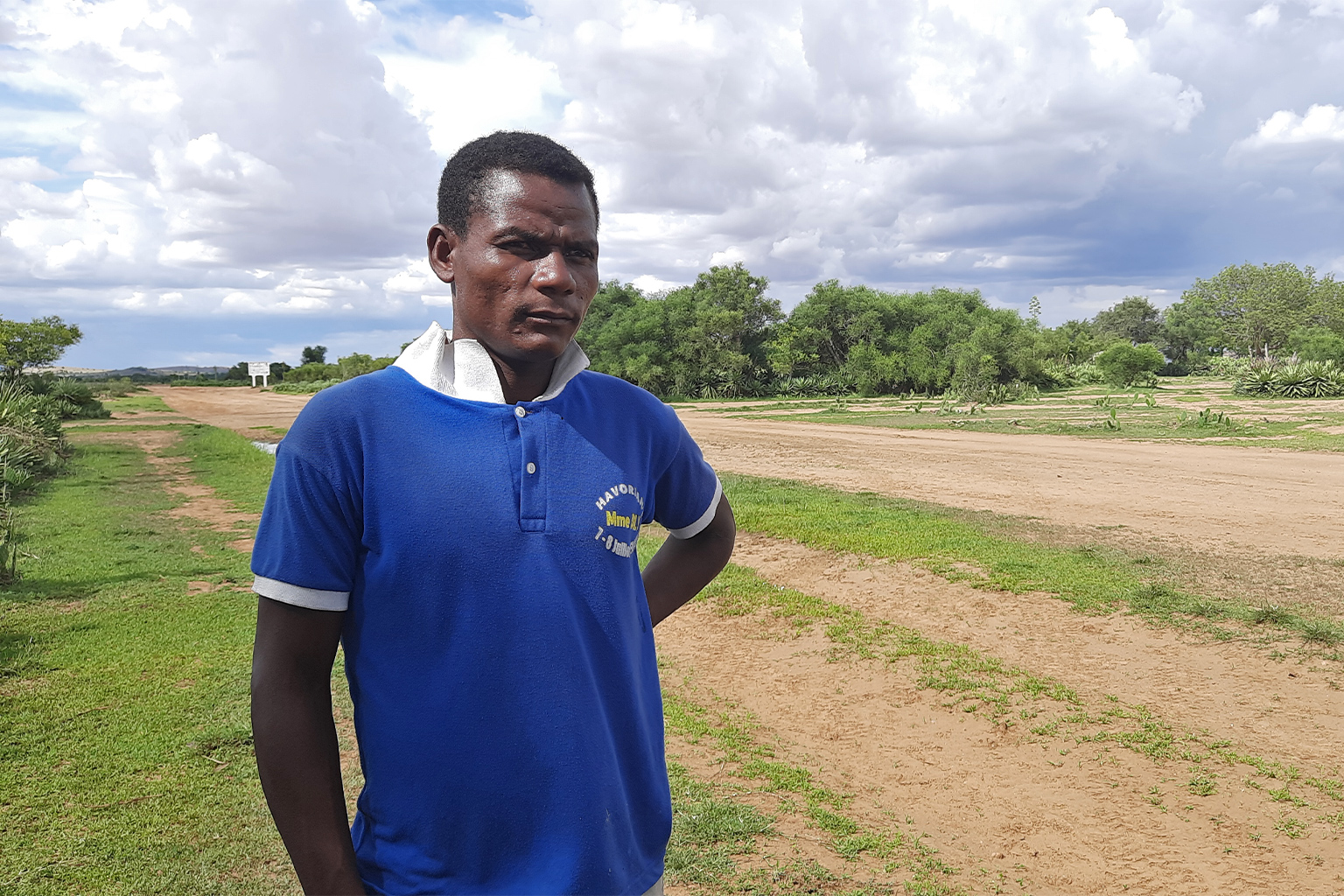
The seismic changes awaiting places like Ambohitsy Haut are triggered by a global push away from fossil fuels that powered industrialization in many parts of the world but bypassed places like Maniry. Here, in the deep south of Madagascar, unmade roads make it challenging to deliver food aid amid a devastating drought.
Graphite is the biggest constituent of lithium-ion batteries, which are critical to the clean energy transition, in particular for electric vehicles. Demand for this crystalline carbon form could surge 25 times by 2040.
Mining corporations are scouring the globe for these “transition minerals,” some of which are found in areas already suffering the worst current impacts of climate change. By 2026, Africa could become the largest natural graphite producer for Li-ion batteries, with extraction concentrated in Mozambique and Madagascar, an island nation off mainland Africa’s eastern shore. Madagascar is facing the prospect of more frequent droughts and more destructive cyclones.
Evion is touting Madagascar as an alternative to China, the world’s leading graphite supplier. It’s not the only one. Tirupati Graphite, a U.K.-listed company operating in Madagascar, increased its annual production capacity from 3,000 to 30,000 metric tons in three years.
But experts and activists say the graphite mining rush is coming to a country and communities ill-prepared for it: obsolete mining laws, a brittle land rights regime, and limp environmental and social protections.

‘Our ancestors’ graves are proof the land is ours’
The town of Maniry lies 180 kilometers (112 miles) inland from Toliara, a port city on Madagascar’s southwestern shore. The paved route from Toliara ends a quarter of the way, yielding to a dirt road. The last miles to Ambohitsy Haut, a settlement of some two dozen scattered mud and thatched-roof huts, are on a rocky cactus-lined track.
Fruits from the prickly pear cactus (Opuntia spp.) have helped people across Ampanihy district, where the Maniry project is located, survive. Ampanihy is one of the districts worst affected by the drought afflicting southern Madagascar: half its population is going hungry, with families surviving on whatever grows in this parched terrain: cacti fruit, weeds.
But the wider Atsimo-Andrefana region is rich in flake graphite deposits. Evion is present at two sites in the region: at Maniry and further north in Ianapera commune. Another project in Atsimo-Andrefana, developed by Canadian company Nextsource, the Molo mine, could become Madagascar’s largest graphite mine.
Ambohitsy Haut, also known as Reambohitsy Ambony, is one of the fokontany or villages in Maniry commune with which Evion has signed exploration pacts. Concrete slabs embedded in the earth mark spots where the company has drilled for graphite. Several lie a stone’s throw from the villagers’ ancestral graves.
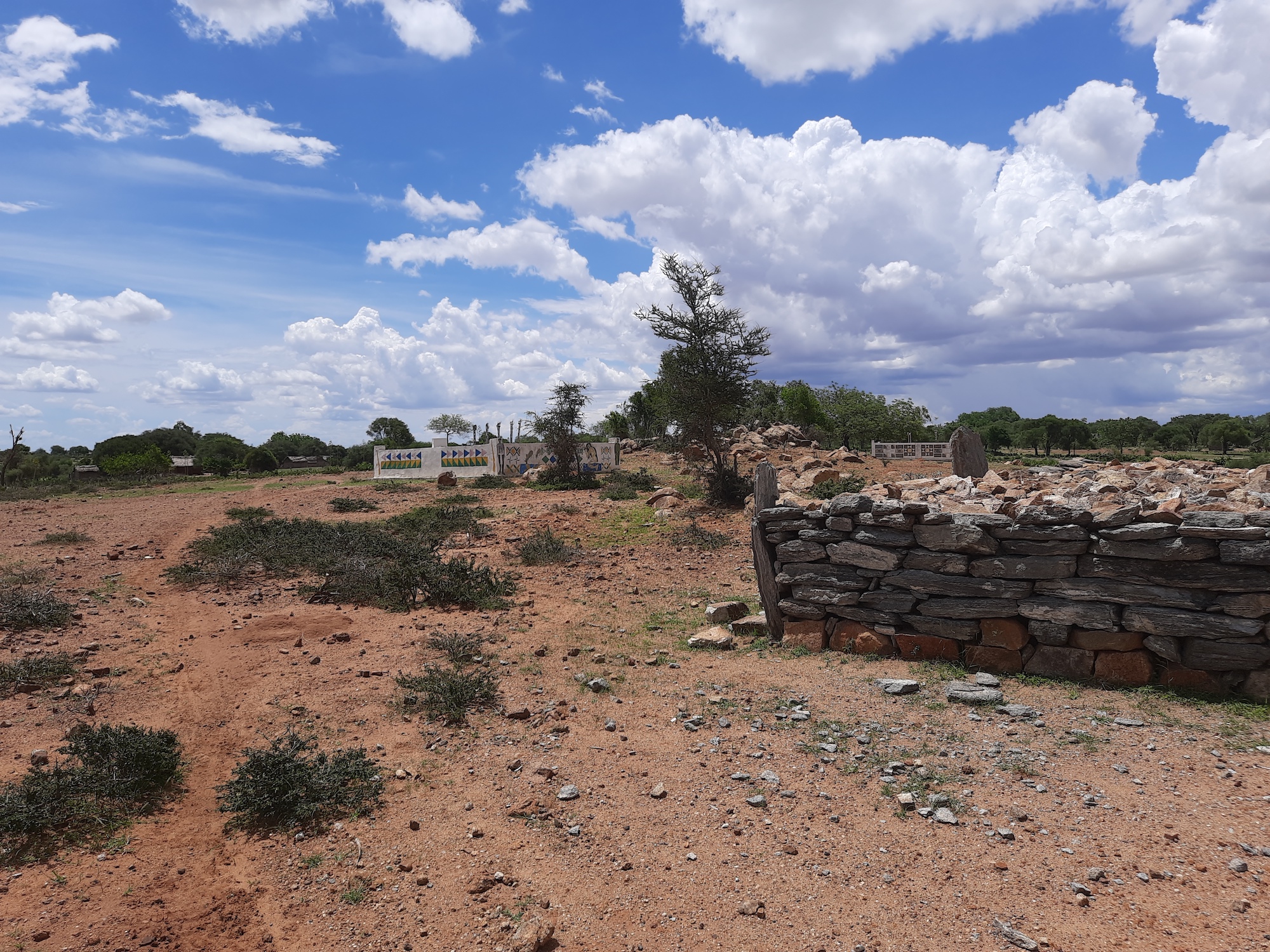
The villagers Mongabay spoke to in Ambohitsy Haut in December, including the village chief, Mandrohivelo, said the only agreement signed at the time was for exploration. The question of resettling elsewhere to make way for a mine that could consume their village remained unresolved for them. And what weighed most heavily on the villagers was the question of their tombs.
“There’s no reason why the tombs cannot be moved. They’re fundamentally aboveground tombs,” Tom Revy, Evion Group’s managing director, told Mongabay in a recent Zoom interview from Australia. “In the grander scheme, we will need to eventually move them with the endorsement of the local villages.”
When Evion representatives came to seek permission for exploratory drilling in 2021, village residents were firm: they did not want the company disturbing their dead. So, Evion agreed not to dig within 7 meters (23 feet) of the graves.
Last November, Evion released a definitive feasibility study (DFS) for the Maniry project, aimed at raising funds to develop the mine. In 2022, it held exploitation rights for one concession and exploration rights for five others in close proximity. Together, the six concessions cover an area of 14,375 hectares (35,521 acres) , about one-fifth the size of New York City.
It applied to convert two others into exploitation permits in June 2022. The one exploitation permit Evion already holds, permit 5394, includes the village of Ambohitsy Haut, according to a Mongabay analysis.

In fact, the village is right where Evion intends to locate its main operation, Mongabay’s analysis shows. The company plans to dig an open pit to extract the graphite, which occurs in layers that can be tens of meters deep and run hundreds of meters in length. Two massive waste dumps will lie on either side of the pit. Next door, the company wants to build a processing plant and, further north, a tailings storage facility that will hold processing residue. It also plans three smaller pits and another waste dump nearby.
“No one has private ownership of the land there. It’s all traditional ownership,” Revy said. “We will honor the ownership as if it was legally binding.” He added that the company will compensate villagers based on consultations with them.
The Malagasy state ultimately owns the rights to subsoil mineral resources. However, what happens aboveground is far, far trickier. In Africa, more than 75% of extractive projects for minerals essential to the clean energy transition lie in the orbit of Indigenous and peasant lands, home to people who live off the earth, according to a 2022 study.
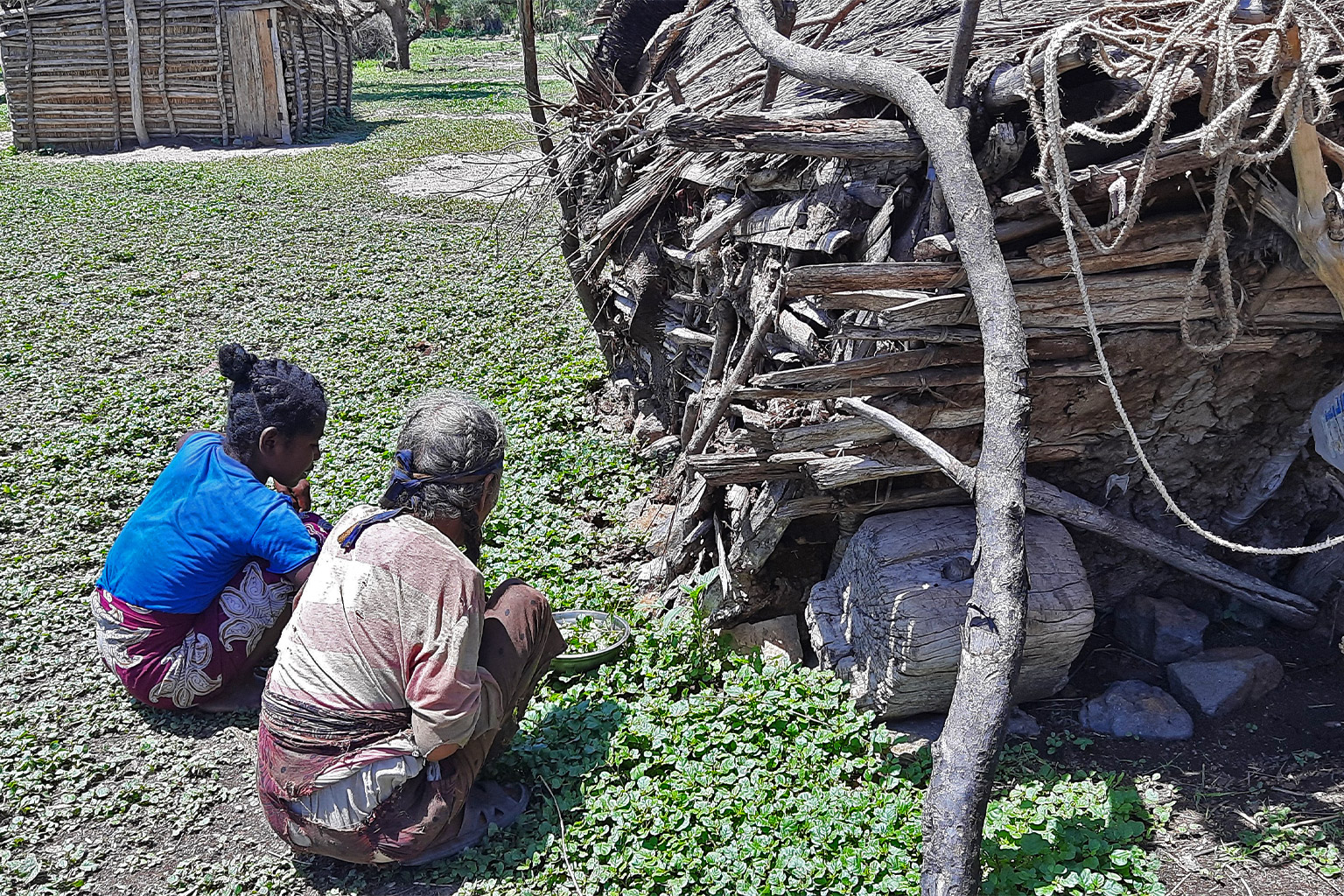
Malagasy law offers little protection for citizens who don’t hold legal claims to land when a mining company comes calling. And most people in Madagascar don’t have formal titles to their land, said Mamy Rakotondrainibe, president of Collectif pour la Défense des Terres Malgaches, a Paris-based NGO that works on land rights issues in Madagascar. The number could be as high as 80%, she said, because registering land claims is an arduous affair and rural residents often don’t have the time or means to go through with it.
Even registering traditional rights to land doesn’t guarantee communities will have a say in what happens on this land.
The principle of “free, prior and informed consent” doesn’t have legal standing in Madagascar, Rakotondrainibe said. It isn’t part of the mining code. Neither do Madagascar’s mining regulations require companies to perform an environmental and social impact assessment (ESIA) before applying for, or receiving, an exploitation license.
Companies only have to commit that they will do the assessment and receive an environmental permit before they start construction. Evion has yet to complete an ESIA, despite aiming to start construction in the third quarter of 2023 and be fully operational by 2024.

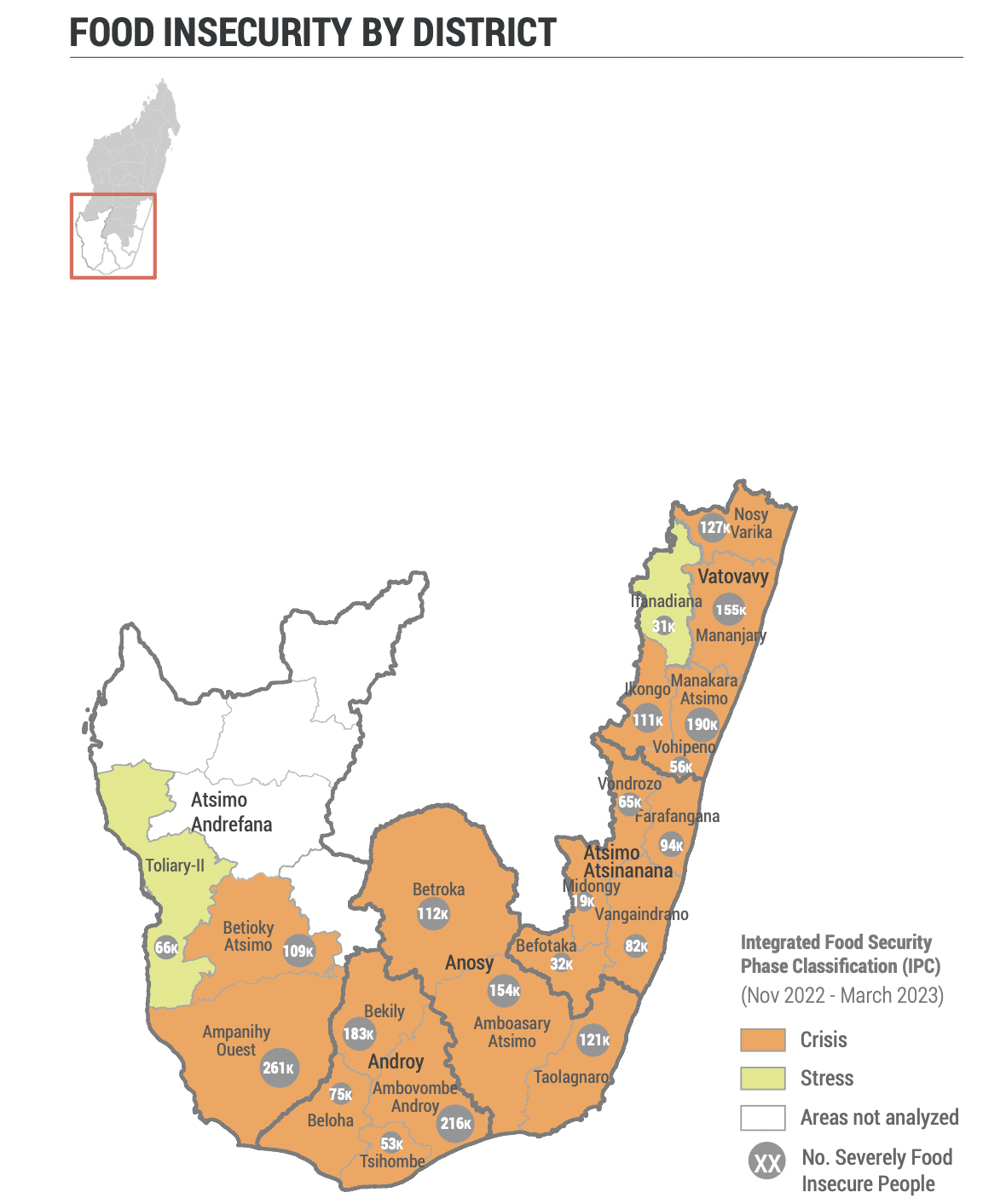
Brian Ikaika Klein, a political ecologist at the University of Michigan in Ann Arbor, has studied land governance in Madagascar and, in his research, observed mining company representatives interacting with community members. “Local people don’t have a veto over the project at any stage,” he told Mongabay in a Zoom interview.
“The discussion is never about whether or not the project should happen,” Klein said. “It is essentially consultants working as the liaisons telling local people what the company’s plans are.”
By the time the discussions happen, if they take place at all, project developers already have the government’s approval in the form of a license for the extraction. Klein said they usually only ask community members what they want in return.
If villagers oppose a project or withhold consent, Rakotondrainibe said, the government can always appropriate the land for public purposes.
Valéry Ramaherison, who runs the mining initiative at Transparency International Initiative Madagascar, described similar problems at the Tirupati project. There, his organization found people and even local authorities had little knowledge of the company’s plans to expand operations.
Ramaherison said low literacy rates are a big barrier for residents to engage meaningfully in the consultation process. Less than a quarter of the working population in Maniry commune can read or write.
Evion estimates 500 or so people live in the five villages in the Maniry project area, and Revy said the company is working on a plan to resettle them. Its definitive feasibility study didn’t have any details about the resettlement plan, and neither did the villagers.
“It will be done in consultation with villagers,” Revy said of the resettlement. “We’ve been talking with them for long enough to know what some of them want.
“Our community liaison officer has been interacting with them [the villagers] for around eight years. They know and respect him, and they listen to him,” he added.
When Mongabay asked in December if they wanted to relocate to make way for the mine, several Ambohitsy Haut residents were opposed. “I will not be told by a vaza where I can live or not,” Etsizakay said, using a Malagasy term for foreigners. “We want to stay here where our ancestors are.” For Etsizakay, it also means remaining close to his dead son’s grave.

Many of the elderly residents shared his reluctance. “They will have to bring each of us a car full of money to make us move,” said Ankarantsoa, 62, who owns a large parcel of land in Ambohitsy Haut.
The proposed life of the Maniry mine is 21 years. Under Malagasy law, exploitation permits are granted for 40 years with the possibility of renewing them twice, for 20 years each. If Evion sticks around that long, Ankarantsoa will likely be in his grave when the company leaves. The cemetery that hosts his community’s dead now probably won’t exist.
But younger residents like Tahovelo, 32, who is village chief Mandrohivelo’s son, and Soalahatse, 23, who is Ankarantsoa’s son, said they would consider moving if it meant better opportunities. Why not? Tahovelo said. He could work with the company; supply them with goods.
Yet even Tahovelo balked at the possibility that the company could claim rights to the land he and his family have lived on and tilled for generations. It’s this question of ownership that rankles him and other residents Mongabay spoke with, in part because it will determine how much say they have in their fate and the extent to which the company must compensate them to exploit the minerals below their feet.
“BlackEarth Minerals is ready to respect the traditional customs in the place where it will work,” says the agreement between BEM representatives and villagers signed in 2021. Traditionally, land is passed down from father to son here, Tahovelo said. “We might not have the papers, but the fact that our ancestor’s graves are here is proof this land is ours,” he said. “A foreigner cannot come here and claim this land because their ancestors are not buried here.”
‘The land is ours, and so is the water’

On a December morning, Pisaky, a wiry woman in her 70s, plucked bea, a kind of weed that surrounds her mud and wood shack. “It does not go well in the stomach, but the belly is empty, it has to be filled,” she said, preparing a swill with the leaves.
While the unappetizing plant is abundant, the other essential ingredient for the meal isn’t: water. There’s a shallow well behind Pisaky’s hut. It hardly provides enough water to fill two buckets in the dry season. Rains have failed for seven consecutive years here, Chief Mandrohivelo said.
Almost all of Madagascar’s deep south is wilting under the effects of the harshest drought in two decades. The unrelenting dry conditions, which began in 2018, left 1.64 million people in “crisis” or “emergency” levels of food insecurity in 2022, according to the U.N. Office for the Coordination of Humanitarian Affairs.
On the way to Maniry, villagers collected muddy rainwater that had pooled on the dirt road to drink and use in their homes. But when one too many vehicles have run through these pools, one man told Mongabay, the water becomes too dirty to use.
Yet there is only one mention of drought in Evion’s 114-page feasibility study: It talks about the company donating rice “to villages within the Project area to assist with the long running impact of droughts.”

Some villagers also say the company’s experts used water from their village wells and a stream that flows through the village during exploration work.
Evion also dug several boreholes around the villages. These are machine-dug wells, deeper than anything the villagers have, Tahovelo said. They allow the company to have water when the villagers’ own wells run dry — and the latter can’t use them because they’re locked by the company, he said. Revy denied this allegation.
He said they engaged a Toronto-based consultant to model the project’s water requirements. “They found that within the mine area, which we would fence, we will be self-sufficient based on the availability of underground water sources without affecting the local population,” he said. “There’s no impact outside the fence for 15 years.”
The villagers understood the problem somewhat differently. For them, the question of who has rights to the water is linked to the question of the land Evion seeks to fence off.
“The land is ours, and so is the water,” Tahovelo said, “We should be compensated for its use.”


Rates of return
Despite no grid power access and no all-season road to transport materials, Evion is pitching stellar investment returns. According to the company’s report, Madagascar has strategic advantages, like “very competitive labour rates and mining laws.”
Mining reforms have in fact been on hold for at least four years in Madagascar, partly because the Malagasy government has locked horns with major multinational companies mining in the country over taxes and royalties owed to the state.
Mining reform advocates say they fear that a slew of projects coming online under current laws will only multiply existing challenges, from land rights disputes to environmental damage. Land conflicts continue to haunt even long-established mines like the Rio Tinto-owned ilmenite mine in the Anosy region, which borders Atsimo-Andrefana. At issue is not government-granted permits and licenses, but the social license to operate.
Nextsource’s Molo project, which started construction this year, received its environmental license in 2019. Its feasibility report identified critical environmental concerns with graphite mining: contamination from waste dumps and the tailings storage facility; runoff leading to soil and water pollution; dust pollution due to mine traffic; potential oil and fuel leakages. The report also recognized blasting at mining sites as a hazard for the nearby populations.
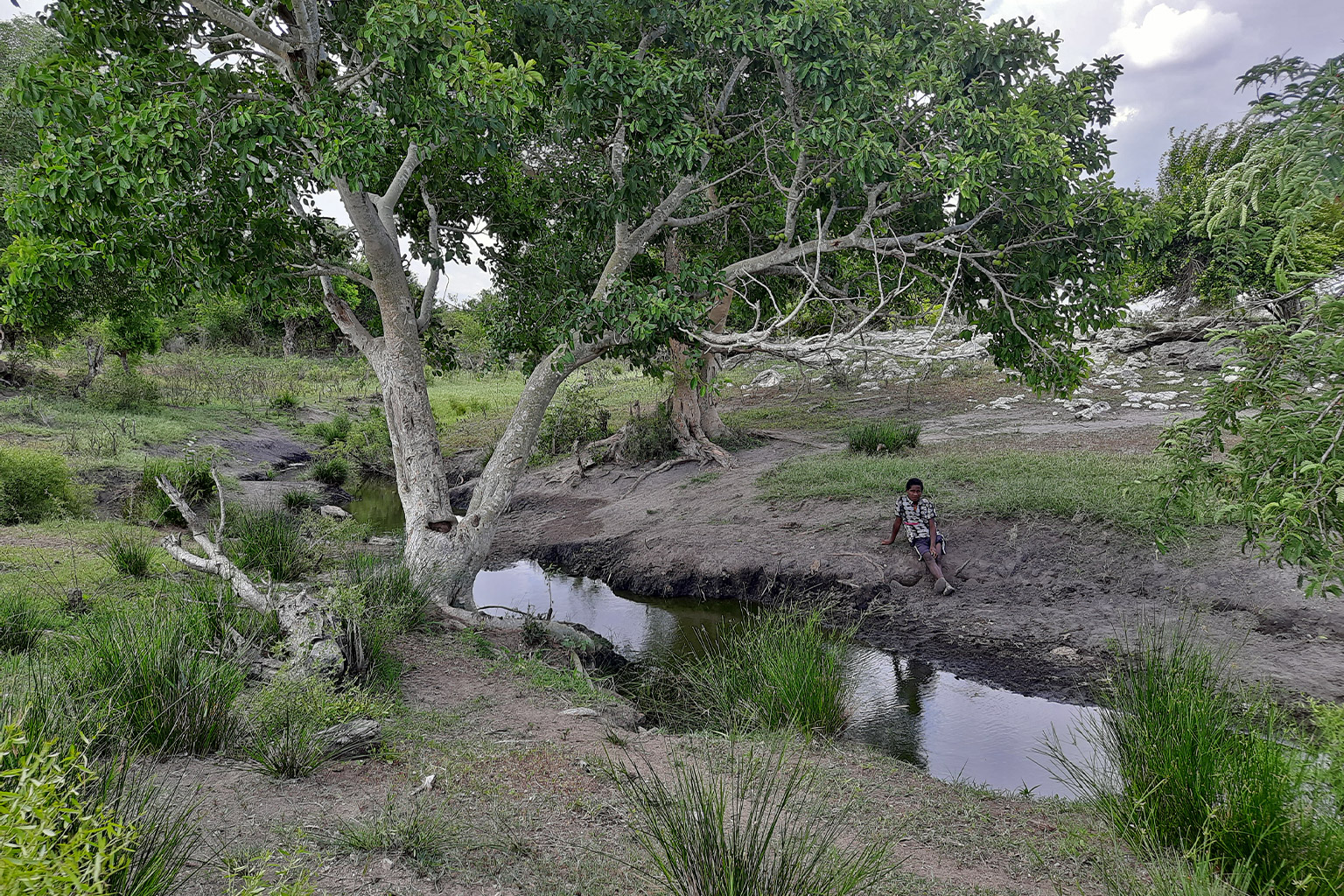
As calls to decarbonize the global economy grow, some clean-energy advocates argue the cleanup must extend to the mineral extraction that will undergird the transition.
The Talga Group, which is tapping mining deposits in northern Sweden, says it will produce one of the world’s greenest graphite-based battery anodes. For its Vittangi Graphite Project, Talga completed and submitted an ESIA three years before its scheduled production date in 2024. The mine will rely on hydroelectricity to meet energy needs. Talga, an Australian company, also plans to pause mining for a stretch of the year to allow reindeer migrations and to respect the rights of the indigenous Sámi reindeer herders, based on consultations with community groups.
While it is difficult to predict how well the arrangement will work in the future, on paper, it offers a sharp contrast to Evion’s plans. The single largest operating cost for the Maniry project comes from an unlikely source: diesel. None of the villages at the proposed mining site have access to grid power. Diesel, derived from crude oil, will be used to power most of the mining operation. Plans to incorporate solar in the mix are still under review.
Talga will also process the graphite concentrate and produce battery anodes in-country. Like other African nations, Madagascar will be shipping its graphite concentrate for processing, so will lose out on economic gains from value addition. Evion has deals to supply plants in India and the U.S. and is positioning itself as a key supplier to battery manufacturers in Europe.
The company is bullish on its own profitability, given the soaring demand for EVs and the push by the U.S. and Europe to secure non-Chinese sources of graphite.
Evion plans to sell graphite concentrate at $1,448 per metric ton on average, generating $1.64 billion in revenue over the mine’s life. The company projects the Maniry project’s post-tax rate of return to be 29%.
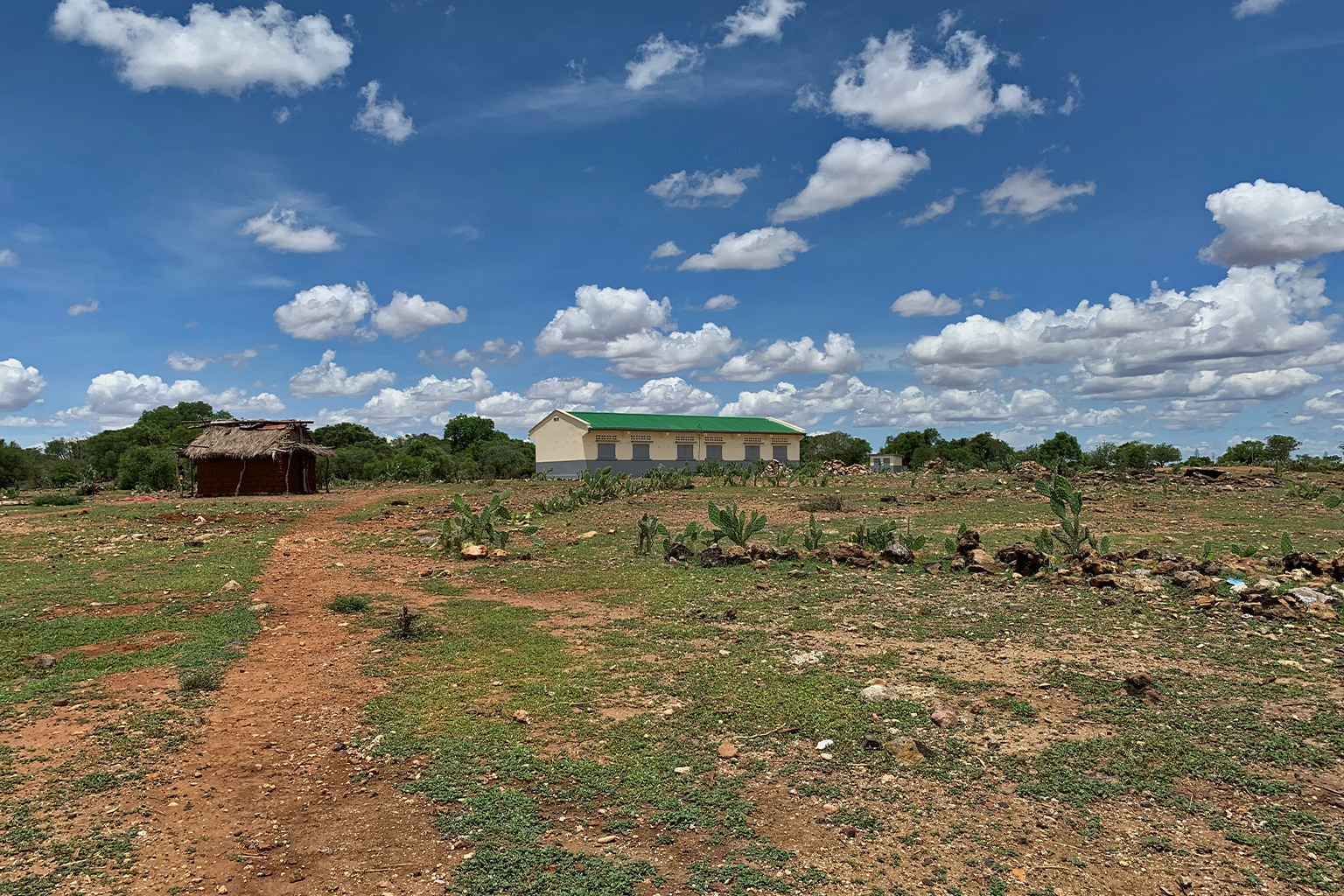
Etsizakay has also made some calculations. He has a field where he plants maize, cassava and peanuts, but failed rains these past years have left him dependent on food aid, like more than 1.5 million other people across Madagascar’s drought-ravaged south. To make extra money, he took up work connecting pipes for Evion during their exploration digs. For this, he said he received 50,000 ariary (about $12) a month.
For the time being, the most tangible benefit from Evion’s presence in Ambohitsy Haut is this kind of non-contractual work for men during exploratory drilling. When told about the company wanting to prospect, the villagers asked for all the things their village lacked: a school, a hospital, adequate water pumps, and jobs. Evion built a concrete school building late last year. Villagers were waiting for desks and books.
“This is our land, the graphite is our inheritance,” Tahovelo said of the village. The question is, what price will they pay for inheriting this mineral-laden earth?
Banner image: Etsizakay showing graphite residue from a graphite outcrop in Ambohitsy Haut. Image by Malavika Vyawahare/Mongabay.
Will clean-energy minerals provoke a shift in how mining is done in Africa?
Citations:
Klein, B. I. (2022). Mineral commons: Collective claims to territory in the goldfields of Madagascar. Political Geography, 99, 102783. doi:10.1016/j.polgeo.2022.102783
Owen, J. R., Kemp, D., Lechner, A. M., Harris, J., Zhang, R., & Lèbre, É. (2023). Energy transition minerals and their intersection with land-connected peoples. Nature Sustainability, 6(2), 203-211. doi:10.1038/s41893-022-00994-6
